Shooting 'I, Tonya' on Kodak 2-perf 35mm helped deliver a story with soul
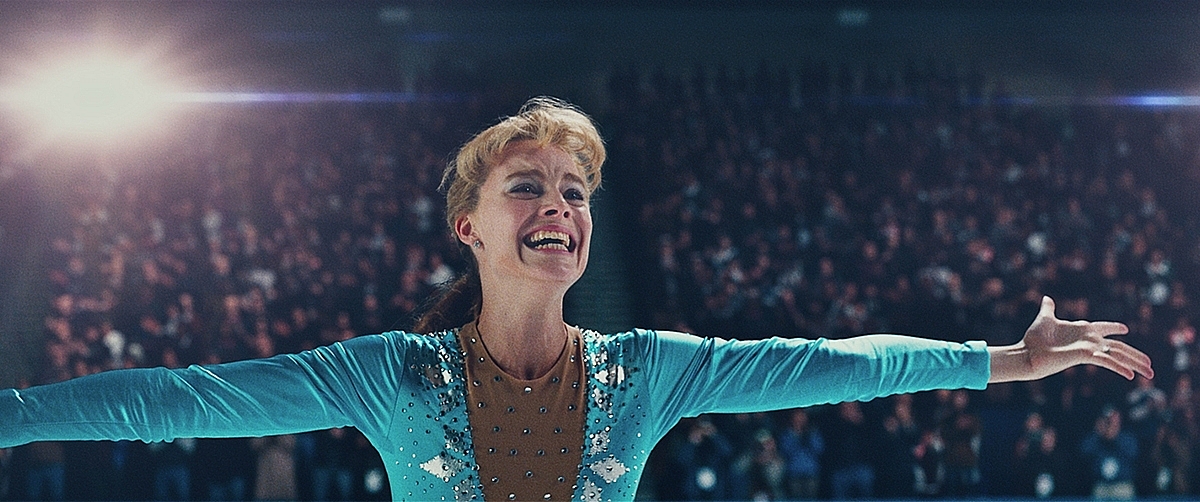
Tonya Harding (Margot Robbie) after landing the triple axel in "I, TONYA", courtesy of NEON and 30WEST
I, Tonya – directed by Craig Gillespie, written by Steven Rogers and shot on 2-perf Kodak 35mm film by cinematographer Nicolas Karakatsanis – follows competitive figure skater Tonya Harding and her association with the physical attack on rival Nancy Kerrigan in the run up to the 1994 Winter Olympic Games.
A genuine talent, hailing from a poor background in Portland, Oregon, Harding was the first American woman to complete two triple axel jumps in competition and rose rapidly to the top ranks of U.S. figure skating. However, she is best-remembered for her likely connection with the notorious, ill-conceived and crudely-executed assault, which saw a telescopic truncheon being smacked across the kneecap of her fellow competitor.
Margot Robbie stars as the quick-tempered Harding, with Sebastian Stan as her violent, bull-headed ex-husband Jeff Gillooly, and Allison Janney as her chain-smoking, acid-tongued mother, LaVona Golden. Based on what Gillespie says were “irony-free, willfully contradictory, and totally true” interviews with Harding and Gillooly, the movie fuses contemporaneous live-action storytelling with mockumentary-style interviews set in the modern day, while also breaking the fourth wall (when the actors directly reference the audience). The result is a tragicomedy, transporting the viewer into a real-life story of jealousy, victimization and class conflict.
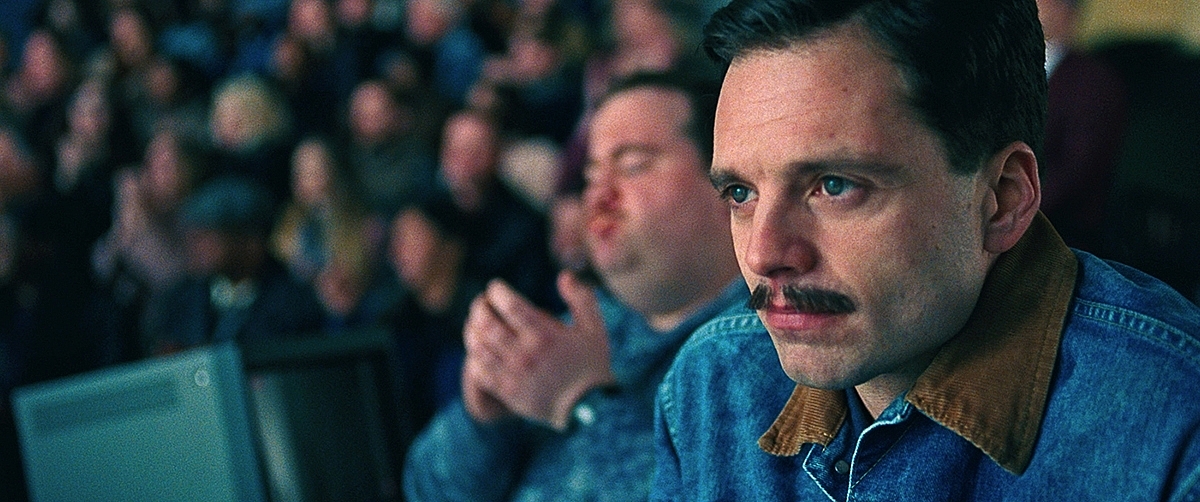
Jeff Gillooly (Sebastian Stan) watches a routine in "I, TONYA", courtesy of NEON and 30WEST
I, Tonya received a plethora of positive reviews, plus a good many accolades in the 2018 awards season, including OSCAR® nominations for Robbie (Best Actress) and Janney (Best Supporting Actress), five nominations at the BAFTA Awards, and a Golden Globe win for Janney.
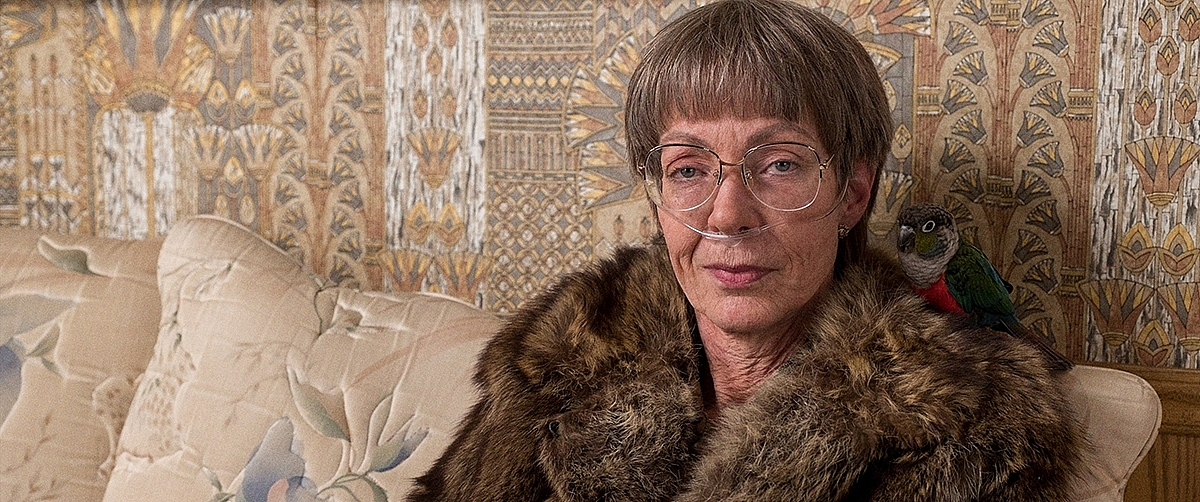
LaVona Golden (Allison-Janney) and her pet bird in "I, TONYA", courtesy of NEON and 30WEST
Principal photography began in mid-January 2017 in Macon, Georgia, with Macon Coliseum used to film the ice skating sequences, along with locations that doubled for Harding’s original Portland neighborhood. Production wrapped in late February after 31 shooting days.
“I was not immediately struck by the idea of a movie about figure skating and didn’t read the script right away,” Karakatsanis admitted. “But once I had read it – in one sitting – I felt ashamed that I had left it so long. It was really good, very touching, and it was absolutely clear to me how it should be shot.
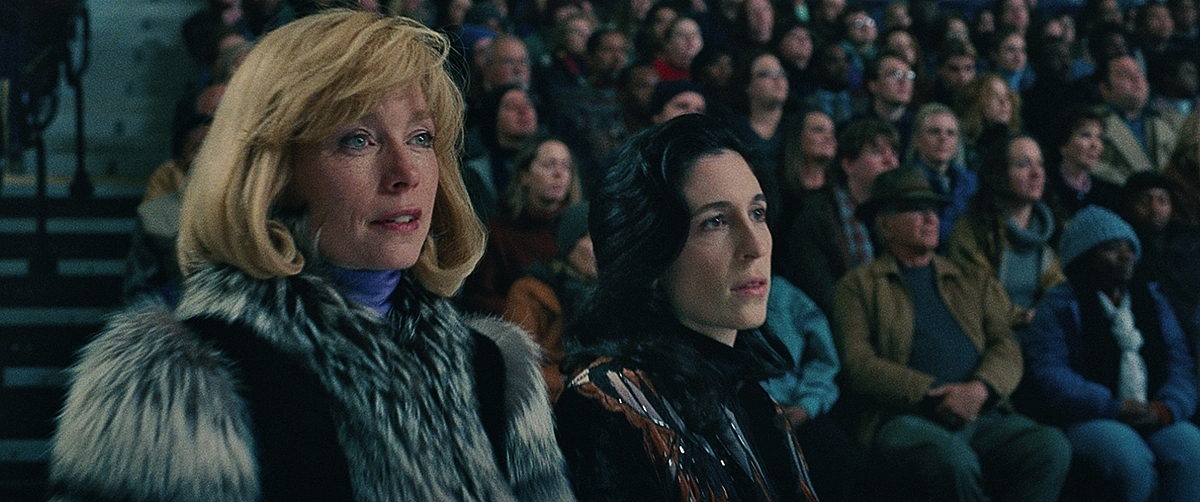
Coach Diane Rawlinson (Julianne Nicholson) watches the ice in "I, TONYA", courtesy of NEON and 30WEST
“In my opinion, I felt that visually it needed to really embrace the souls of the characters and their different perspectives on the story, while contrasting the color and grittiness of lo-fi, small town Americana of the time, with the flat, artificiality of the modern-day interviews. I shared these thoughts with Craig, discovered he had the same vision, and I got the job shortly after that.”
Karakatsanis says he rarely references other movies for cinematographic inspiration, preferring still photography to offer clues and cues to possible lighting styles. In this respect, he says he was influenced by the cerebral and humanistic portraits of daily life in photographic works by Jeff Wall and Martin Parr. As for breaking the fourth wall, Gillespie provided references from a range of different movies, including Woody Allen’s Annie Hall (1977, DP Gordon Willis).
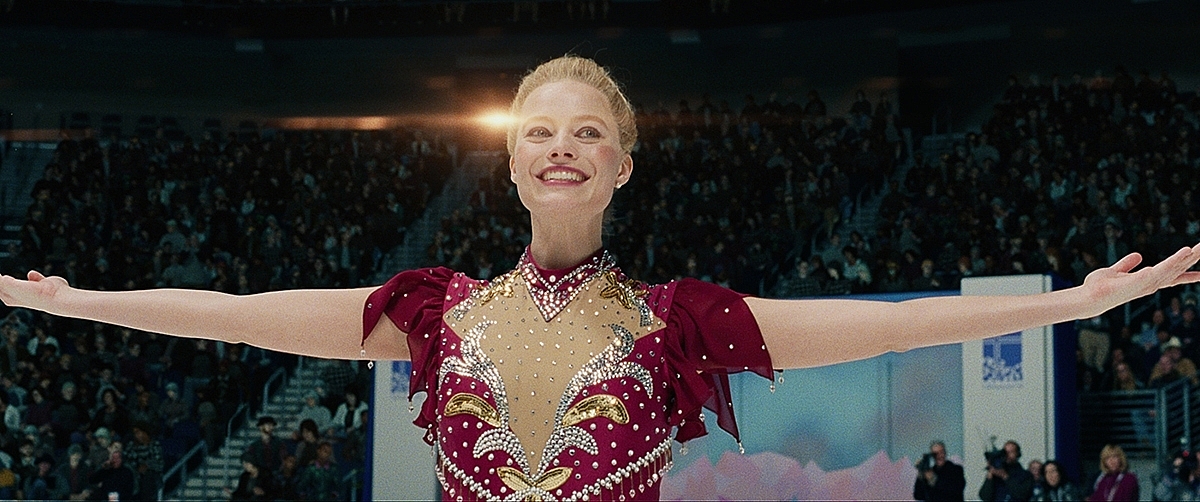
Tonya Harding (Margot Robbie) at the 1994 Olympics in "I, TONYA", courtesy of NEON and 30WEST
In pursuit of the colorful and honest look, Karakatsanis decided to shoot the live action sequences, over 95% of the feature, on just one film stock – KODAK VISION3 500T Color Negative Film 5219 in 2-perf – combined with his own set of Leica Summilux prime lenses. The laboratory at Crawford Media Services in Atlanta, now Kodak Film Lab Atlanta, was used to process the filmstock. The interview sequences were shot in 4:3 aspect ratio using digital cameras.
“Shooting 2-perf 35mm gives you a 2.40:1 widescreen aspect ratio, which I felt really suited the time period of our story, while also providing a big visual contrast to the interviews,” Karakatsanis said. “The 500T is a really versatile, sensitive stock that you can use, in combination with filtration, to shoot the wide range of day/night, interior/exterior scenes. Plus it renders color really well, especially reds and pinks, and I wanted this movie to be really colorful. Nothing muted. The Summilux lenses are very natural, not harsh, and were the perfect complement to the 500T on this production.”

Young Tonya Harding (Margot Robbie) and Jeff Gillooly (Sebastian Stan) in "I, TONYA", courtesy of NEON and 30WEST
Although I, Tonya was, out of preference by the director and cinematographer, predominantly a single-camera shoot, Karakatsanis says the production had four camera bodies (dual ARRI LTs, ARRI 235 and ARRI 435) ready-to-go at any one time. As he explained, “When it came to moving the camera, we more or less had everything in there – handheld, dolly, crane and Steadicam. There were no specific rules. We acted more on the spur of the moment as to how the action or the sequence was playing out and moved the camera according to our instincts at the time.”
Karakatsanis revealed that shooting the ice skating sequences proved quite a challenge, due to the need to follow the fast, short turns of the dance routines, and his prerequisite to keep the frame filled as much as possible with the character’s faces, especially Tonya. In this venture, he was ably supported by camera operator Dana Morris. “Dana said he was a very good ice skater and that rather than using Steadicam for these shots, that he could glide across the ice with an ARRI 235 of his shoulder and follow the action handheld. He did an amazing job, and the results look very smooth.”
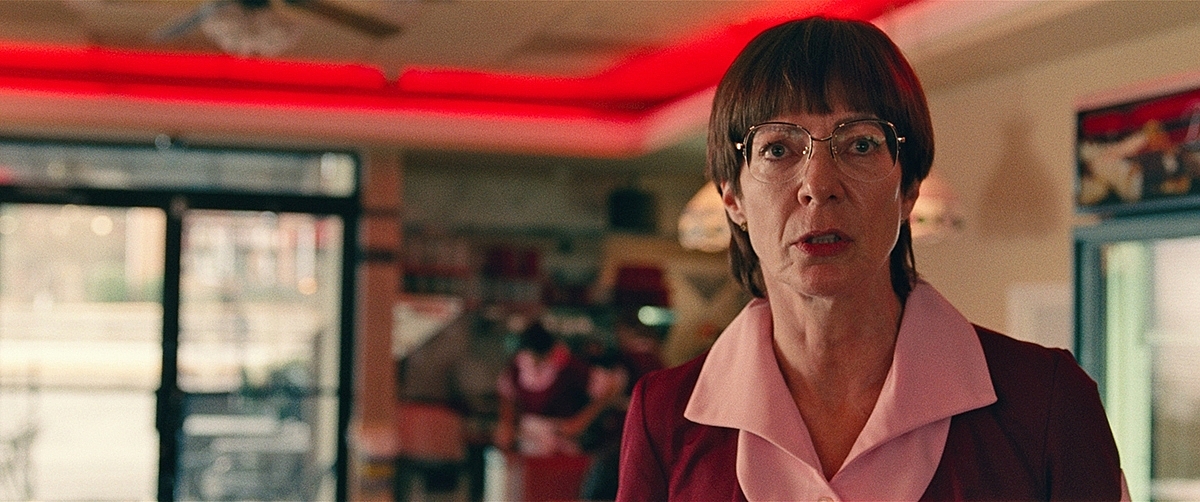
LaVona Golden (Allison Janney) at work in "I, TONYA", courtesy of NEON and 30WEST
With only 35 days to shoot the production, Karakatsanis attests to the value of film in instilling focus and maintaining discipline amongst cast and crew. “Film gives you a nice sense of rhythm, and with Craig’s infectious energy, everyone was on board with a high pace of production. Unknown to me, Craig kept a private log of the shoot, and I was quite amazed when told me after we wrapped that we had averaged one new set-up every 20 minutes. That’s one of the beauties of film.”
Since shooting I, Tonya, Karakatsanis has overseen the cinematography on two other features, both shot on film, namely Ascension (Kodak 35mm & 65mm) directed by Bas Devos and Un Ange (Kodak 35mm), with Koen Mortier at the helm.
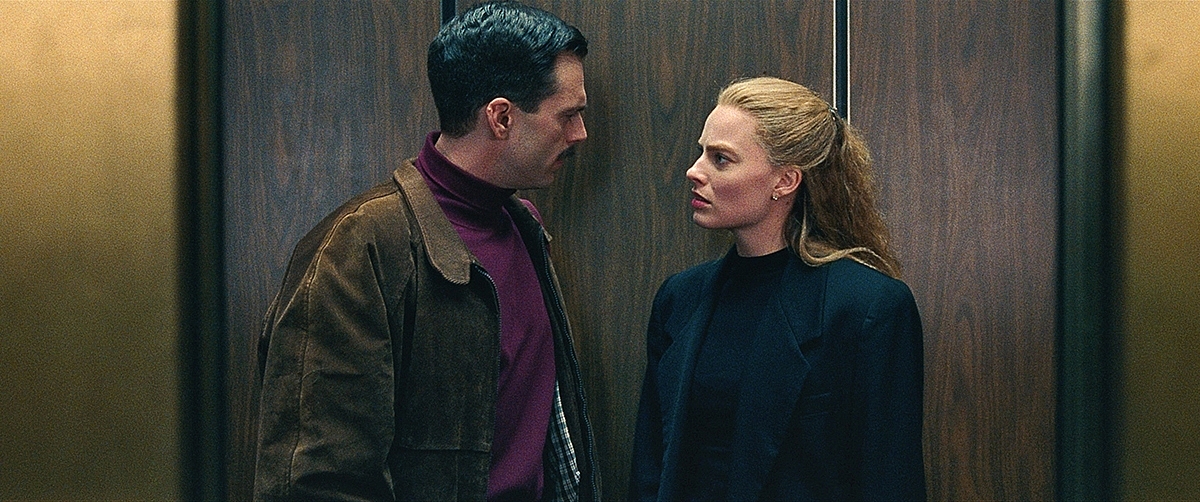
Tonya Harding (Margot Robbie) and Jeff Gillooly (Sebastian Stan) in an elevator in "I, TONYA", courtesy of NEON and 30WEST
“The experience of shooting three features back-to-back on film has been a real eye-reopener,” he said. “I am a guy who likes color, texture and patina – all of which you get naturally from film. With digital, you can have all the lighting and set design that you want, but images can look flat, like wallpaper. Obviously you can try to manipulate the digital image to emulate those organic characteristics of film, but as you’re generally working with 10- or 12-bit pictures, the results just don’t appear natural, and can actually look fake. So why not start with film in the first place?
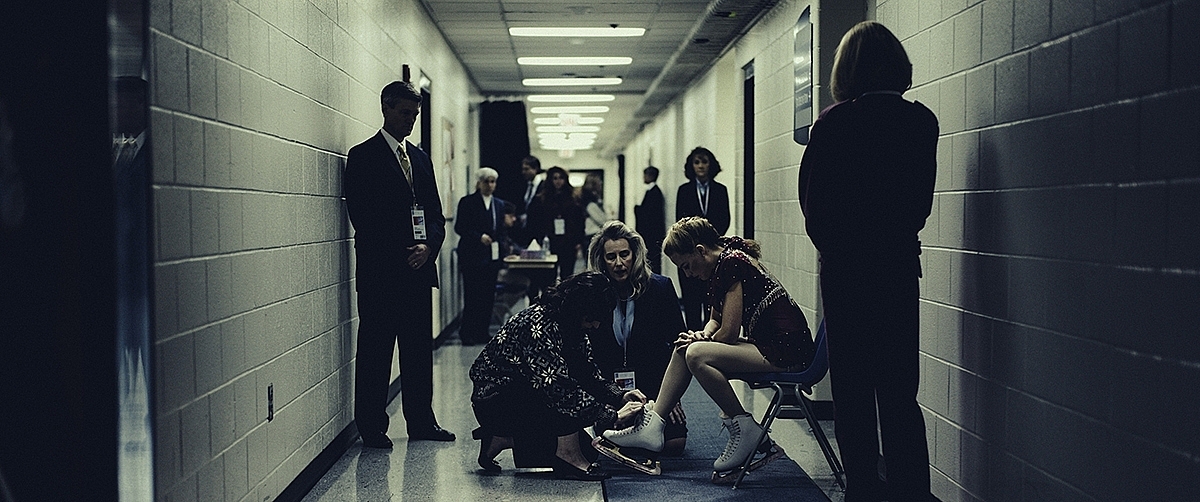
Tonya Harding (Margot Robbie) before competing at the Olympics in "I, TONYA", courtesy of NEON and 30WEST
“There is no doubt in my mind that for features which might be shown in 10, 20, 30 or more years’ time, film should be the standard. It just has a classic, timeless look, based on more than a hundred years of knowledge and history. The trouble with digital is that it is always getting updated and is therefore still evolving. Productions shot on early versions of digital technology now look really old. Some of them are absolutely horrible, and some have been completely wasted. I think that films shot on film will stand the test of time much better. Film gives your production a different soul.”